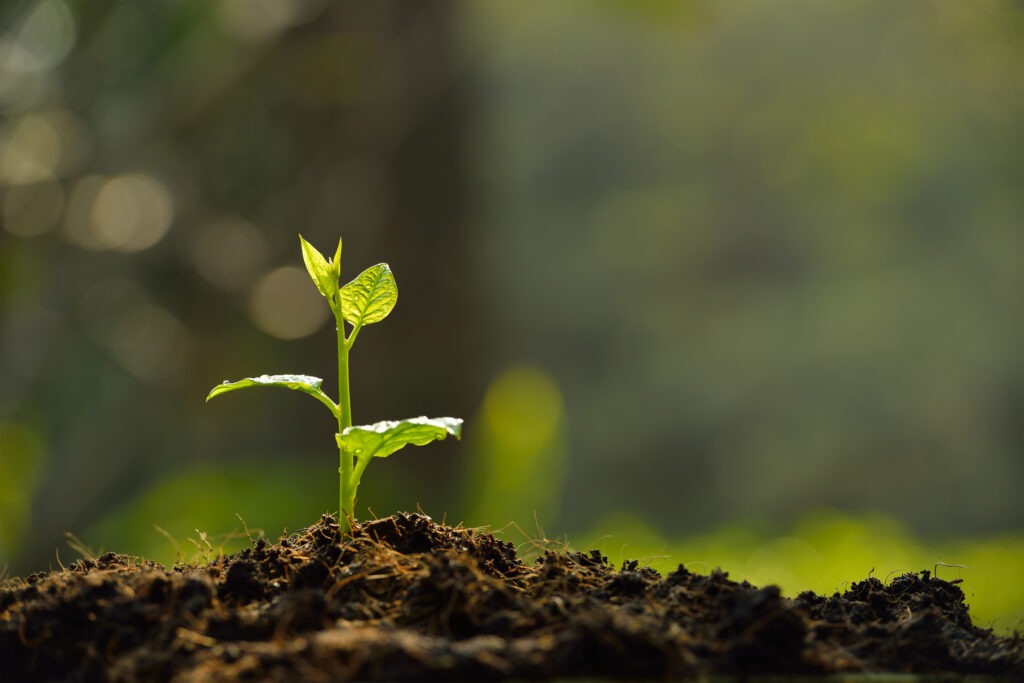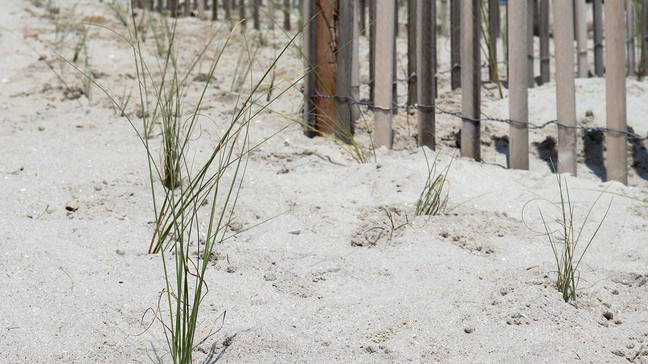Boosting Scotland's Coastal Ecosystem: A Look At Seagrass Planting Initiatives

Table of Contents
The Importance of Seagrass in Scotland's Coastal Ecosystem
Seagrass plays a multifaceted role in maintaining the health and resilience of Scotland's coastal waters. Its benefits extend far beyond its aesthetic appeal, impacting biodiversity, climate change mitigation, and coastal protection.
Biodiversity Hotspot
Seagrass beds serve as incredibly important nurseries and habitats for a wide array of marine species. They provide shelter, food, and breeding grounds, supporting a complex food web.
- Key species dependent on seagrass: Seahorses, scallops, cod, various crustaceans, juvenile fish (including commercially important species like plaice and sole), and numerous invertebrates.
- Impact of seagrass loss: The decline of seagrass meadows directly translates to reduced biodiversity, impacting fish populations and overall ecosystem health. Loss of this crucial habitat contributes to the decline of commercially important species and disrupts the delicate balance of the marine environment.
Carbon Sequestration and Climate Change Mitigation
Seagrass is remarkably efficient at capturing and storing atmospheric carbon dioxide – a process known as "blue carbon." This makes it a significant player in mitigating climate change.
- Carbon sequestration capabilities: Seagrass meadows are estimated to sequester carbon at a rate significantly higher than terrestrial forests, acting as powerful natural carbon sinks.
- Natural carbon sinks: Carbon is stored within the seagrass itself, in the sediments beneath the meadows, and within associated organisms. This long-term storage helps prevent the release of greenhouse gases back into the atmosphere.
Coastal Protection
Dense seagrass meadows act as natural buffers, protecting coastlines from erosion and the damaging effects of storms.
- Mechanics of coastal protection: Seagrass slows down water currents, reducing wave energy and preventing sediment erosion. The roots and rhizomes also stabilize the seabed, enhancing coastal resilience.
- Examples in Scotland: Many areas along the Scottish coastline, particularly in estuaries and sheltered bays, benefit from the natural protection provided by seagrass meadows. These areas are often vulnerable to erosion and storm surge.
Current Seagrass Planting Initiatives in Scotland
Several organizations are actively involved in restoring seagrass meadows across Scotland, employing various methods and employing rigorous monitoring strategies.
Overview of Projects
Various projects are underway, spearheaded by a collaborative effort between government agencies, NGOs, and universities.
- Key organizations: Marine Scotland, Scottish Natural Heritage (now NatureScot), various universities (e.g., St Andrews, Heriot-Watt), and environmental charities like the Seagrass Ocean Rescue.
- Geographic locations: Projects are underway in various locations across Scotland, focusing on areas where seagrass meadows have been lost or degraded, including the Firth of Clyde, the Moray Firth, and other coastal regions.
Methods and Techniques
Seagrass restoration employs various techniques, each tailored to the specific site conditions.
- Planting methods: These include hand-planting, using biodegradable mats seeded with seagrass, and the transplantation of seagrass shoots. Seed dispersal techniques are also employed in suitable areas.
- Challenges: Factors like water quality, sediment type, wave action, and grazing pressure can all influence the success of seagrass planting.
Monitoring and Evaluation
Careful monitoring is essential to assess the success of these initiatives and adapt strategies as needed.
- Monitoring techniques: Regular underwater surveys, remote sensing (using satellites and drones), and sediment analysis are used to track seagrass growth, expansion, and overall health.
- Data analysis: Data collected is crucial for understanding the effectiveness of different planting methods and identifying factors influencing seagrass survival and growth. This informs future restoration efforts.
The Future of Seagrass Restoration in Scotland
The long-term success of seagrass restoration depends on continued investment, collaboration, and sustainable practices.
Funding and Support
Increased funding and public awareness are vital for scaling up restoration efforts.
- Funding sources: Government grants, private sector investment, and public donations are all crucial for supporting ongoing and future projects.
- Public awareness: Raising public awareness about the importance of seagrass and the threats it faces is crucial for garnering support and fostering responsible coastal management.
Collaboration and Partnerships
Effective seagrass restoration requires collaboration between diverse stakeholders.
- Interdisciplinary collaboration: Scientists, policymakers, environmental organizations, and local communities must work together to develop effective restoration strategies and ensure long-term success.
- Community involvement: Local communities play a crucial role in monitoring seagrass meadows and contributing to restoration efforts.
Long-Term Sustainability
Sustainable practices are essential for ensuring the long-term health of restored seagrass meadows.
- Maintaining restored meadows: Ongoing monitoring, management, and adaptive strategies are necessary to address challenges like pollution and climate change impacts.
- Long-term sustainability strategies: Establishing marine protected areas around restored seagrass meadows can help ensure their long-term survival and protection.
Conclusion
Seagrass planting Scotland is crucial for boosting Scotland's coastal ecosystem. These underwater meadows offer significant benefits, from enhancing biodiversity and mitigating climate change to protecting coastlines. Ongoing and future initiatives are vital for ensuring the health and resilience of Scotland's marine environment. Learn more about how you can contribute to seagrass planting in Scotland and help protect our vital coastal ecosystems by visiting [link to relevant organization 1], [link to relevant organization 2], and [link to relevant resource]. Let's work together to safeguard these invaluable underwater treasures for future generations.

Featured Posts
-
 Canelo Alvarez Vs Ufc La Batalla Por La Noche En Mexico
May 05, 2025
Canelo Alvarez Vs Ufc La Batalla Por La Noche En Mexico
May 05, 2025 -
 Ufc 314 Pimbletts Pre Fight Concerns Regarding Chandlers Fighting Style
May 05, 2025
Ufc 314 Pimbletts Pre Fight Concerns Regarding Chandlers Fighting Style
May 05, 2025 -
 Deutschland Beim Esc Wiener Duo Abor And Tynna Im Rennen
May 05, 2025
Deutschland Beim Esc Wiener Duo Abor And Tynna Im Rennen
May 05, 2025 -
 Why Did Teddy Magic Leave Britains Got Talent Simon Cowells Surprise
May 05, 2025
Why Did Teddy Magic Leave Britains Got Talent Simon Cowells Surprise
May 05, 2025 -
 Scottish Coastline Restoration Seagrass Planting Bids And Their Impact
May 05, 2025
Scottish Coastline Restoration Seagrass Planting Bids And Their Impact
May 05, 2025
Latest Posts
-
 The Schwarzenegger Family And Patricks Choice To Go Nude On Camera
May 06, 2025
The Schwarzenegger Family And Patricks Choice To Go Nude On Camera
May 06, 2025 -
 Patrik Shvartsenegger I Ebbi Chempion Novye Podrobnosti O Fotosessii Dlya Kim Kardashyan
May 06, 2025
Patrik Shvartsenegger I Ebbi Chempion Novye Podrobnosti O Fotosessii Dlya Kim Kardashyan
May 06, 2025 -
 Patrick Schwarzenegger Nude Scene The Schwarzenegger Familys View
May 06, 2025
Patrick Schwarzenegger Nude Scene The Schwarzenegger Familys View
May 06, 2025 -
 Fotosessiya Patrika Shvartseneggera I Ebbi Chempion Dlya Kim Kardashyan
May 06, 2025
Fotosessiya Patrika Shvartseneggera I Ebbi Chempion Dlya Kim Kardashyan
May 06, 2025 -
 Patrick Schwarzeneggers Nude Scene Arnold Schwarzeneggers Response
May 06, 2025
Patrick Schwarzeneggers Nude Scene Arnold Schwarzeneggers Response
May 06, 2025
